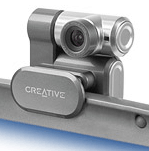Videoconferencing

Introduction
GridPP depends upon excellent communications between distributed
groups/individuals. We rely upon low-cost IP videoconferencing
facilities for operational discussions between multiple users at all
levels. We aim to monitor/comply with
evolving standards over JANET and
use IP videoconferencing and associated application sharing as a working
tool.
The industry standard for videoconferencing over IP is H.323. For
personal/desktop conferencing we use this both point-to-point and
multipoint. The latter requires the use of an MCU (Multipoint Control
Unit).
Note that e-Science uses Access Grid, which uses a different
videoconferencing protocol.
The general direction we adopt is guided by the
LCG Report on
Collaborative Tools.
Current Practice
(as of October 2007)
For International multi-point we link into
EVO using H.323. You need to register in advance of your first meeting.
This incorporates better support for macs (but has a longer start-up time than the previously adopted VRVS).
Users link into a video conference via their windows desktop using a
standard USB camera (e.g. those from Creative).
Earlier recommendation was
polyspan ViaVideo unit
and before that a Zydacron PCI card.
For multi-point within e-Science in the UK we use Access Grid
facilities which are available at each of the e-Science Centre
sites. Note that this is a different technology (based on MBone tools) currently requiring
booking (and set-up) by your local e-Science centre. Beyond this there
are video-conference rooms at most Universities which can be booked
through your local Computing Service.
A review (and appendix) of multi-site video-conferencing
requirements for the UK e-Science Programme provides more detailed
information.
For point-to-point this allows application sharing (also known
as data collaboration capability) which works quite well.
For multipoint within GridPP in the UK we can also connect via a gatekeeper
maaintained by the JANET Video Conferencing Service (JVCS) using their
JVCS-OnDemand ) Service.
Note, however, that this service is used relatively infrequently.
Application sharing is possible, but current practice is to
rely upon pre-prepared web pages with links to all source material.
Known Issues
Firewalls may restrict required ports. This may not be under your
control, but in general these have been overcome at all sites within the
UK (eventually). The current status is that these have been overcome for VRVS and EVO. The EVO manual has more port details in the appendix.
Polyspan (and other vendors of hardware video codecs) support only
Windows and have no plans to support linux. Users of linux desktops -
see notes on Gnomemeeting below, but if a hardware codec is mandated then
you'd need access to a Windows PC or Mac (for the forseeable future).
Interworking between Access Grid and individual polyspan
units require a validation process which has not really been tested.
MCU managers generally restrict use of software codecs such as
those in NetMeeting and GnomeMeeting.
Netmeeting should also not be used to connect into VRVS.
Solutions?
We track developments from
Ekiga (GnomeMeeting)/OpenH323
This is a good software-codec solution on linux.
There are comments on various H.323
solutions at the
VRVS recommended desktop client page.
Contact
Any questions, comments or updates,
please contact Tony Doyle
